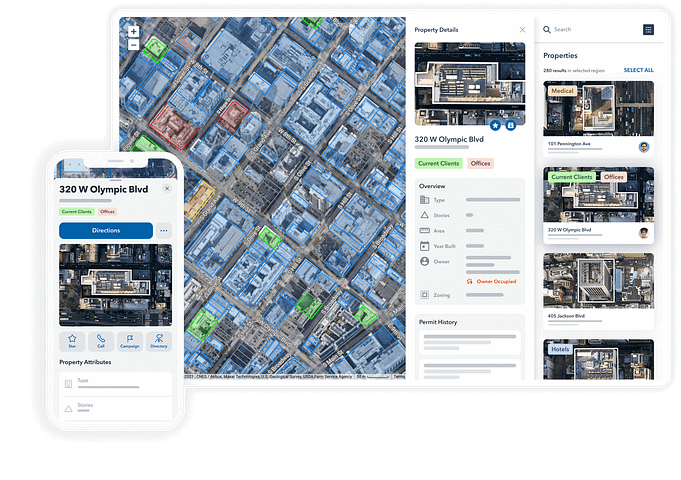Introduction
Small to medium-sized (SMB) commercial services business owners and managers are often under-resourced and wear too many hats. With limited time, budget, and an already overstretched team, they still need to get the work done and find effective tools to attract customers. After all, a business’s success hinges on generating a steady stream of qualified leads that turn into sales.
Building a lead generation system can be overwhelming for SMB commercial services owners due to the complexity involved and the resources required. This is where the right lead generation tools can have a huge impact.
Lead generation software, especially solutions like Convex and Hubspot take care of a lot of the busy work, making things simpler so owners can focus on nurturing leads and closing sales.
In this article, we’ll dive into:
What is lead generation and why it matters for small businesses
The step-by-step process to turn strangers into customers
Proven strategies and techniques to capture more leads
How to choose the right software to skyrocket your sales
The strategies and tools we’ll cover today will help you take control of your business growth and finally build a predictable sales pipeline. By the end of this article, you’ll have a clear roadmap to boost your business using the ultimate lead generation software.
Let’s get started!

What is Lead Generation?
At its core, the lead generation process is about attracting potential customers and getting them genuinely interested in what you have to offer.
“Attraction,” something we’ll dive into more in the next section, is the first step in a solid sales process. It’s where you’re warming up prospects and starting to build a relationship by providing them with something of value.
For small businesses, a successful lead generation strategy is absolutely vital. You can have the best product or service in the world, but if no one knows about it, you’ll never make a sale. Effective lead generation helps you:
Get your business in front of your ideal customers
Establish your brand as a trusted resource
Fill your sales pipeline with qualified prospects
Grow your revenue and scale your business
Business slows down without a steady flow of fresh leads, and owner anxiety goes through the roof.
Commercial services businesses without an effective “lead-gen” process in place get stuck in the feast-or-famine cycle, always scrambling for the next client. But with a solid lead generation process in place, you can take control of your growth and build a thriving business.

The Lead Generation Process
Generating leads isn’t a one-and-done activity. It’s an ongoing process with multiple steps, each building on the last. Here’s how it typically works:
1. Identify Your Target Audience
The first step is to get crystal clear on who your ideal customer is. What are their demographics? What challenges are they facing? Where do they hang out online? The better you understand your target audience, the more effective your lead-generation efforts will be.
2. Attract Online Visitors
Next, you need to get your business in front of those ideal customers. That means advertising on various channels or creating valuable content that resonates with them. The goal is to attract qualified traffic to your site.
3. Capture Leads
Once you have visitors on your site, you need to convert them into leads. That’s where tools like email capture forms, chatbots, and website visitor identification come in. These allow you to gather contact information so you can follow up.
4. Qualify Leads
Not all leads are created equal. Some are ready to buy now, while others may need more nurturing. Lead scoring and lead qualification help you prioritize your efforts and focus on the hottest opportunities.
5. Nurture Leads
For those leads that aren’t quite ready to buy, nurturing is key. This is where you build trust and credibility by providing valuable information and resources over time. Marketing automation makes this process more efficient and personalized.
6. Handoff to Sales
Once a lead is qualified and engaged, it’s time to hand them off to your sales team. A seamless handoff ensures no opportunities fall through the cracks. If your sales and marketing “teams” consist of just one person, we’ll soon demonstrate how Convex’s Atlas solution can streamline all these steps. In any case, it’s important that sales and the marketing team are aligned on what defines a qualified lead.
7. Convert Leads
The ultimate goal is to turn leads into paying customers – which requires them to “convert.” In other words, take an action indicating their interest in making a purchase. This is where your sales team can offer a tailored solution and close the deal.
Pro tip: A CRM system is super helpful for keeping track of everything in your pipeline. Salesforce is an excellent platform, though it can be costly for small and medium-sized businesses. On the other hand, HubSpot provides a free solution, albeit with only basic features.
8. Analyze and Optimize
Finally, it’s important to continually analyze your lead generation efforts no matter what channel you use and look for ways to improve.
Ask yourself:
Which channels are producing the best leads?
What’s my ROI from each channel?
What offer do my best customers respond to?
What content resonates most with prospective customers?
Use these insights to optimize your strategy over time.
Now that you know the process of lead generation, let’s talk about some different strategies to generate leads.

Effective Lead Generation Strategies
There are many different ways to approach the lead generation funnel, and the best strategy will depend on your unique business and audience. Here are a few of the most effective:
Inbound Lead Generation:
This approach focuses on attracting leads to you rather than going out to find them. Tactics include content marketing, social media, and search engine optimization.
Outbound Lead Generation:
With outbound, you’re proactively reaching out to potential leads. This might include cold calling, direct mail, or targeted advertising. It can be a good way to reach people who aren’t actively looking for your solution.
B2B Lead Generation:
If you sell to other businesses, your lead generation efforts will look a bit different. You’ll want to focus on building relationships with key decision-makers and demonstrating your industry expertise.
Online Lead Generation:
These days, much of lead generation happens online. From social and email marketing to paid advertising, there are many digital channels to explore. These digital channels tend to be the most cost-effective for businesses on a tight budget and offer the benefit of high ROIs, but they can also be complicated and challenging to set up.
Hybrid Lead Generation:
The most effective approach is often a mix of strategies. For example, you might use inbound tactics to attract leads and follow up with outbound marketing efforts to close the deal.
For instance, try using a B2B lead generation software to spot potential leads, send them a direct mail piece or quote, and then retarget those who visit your website or engage with your social media profiles. This allows you to keep offering them something of value until they turn into leads. We’ll do a full article on this topic in the future.
Techniques to Generate Leads
Now, let’s get into the nitty-gritty. Here are some specific techniques you can use to generate more leads:
Lead Generation Software: Platforms like Convex property intelligence software were specifically designed to help commercial services sales generate leads and close deals faster than anything on the market. We’ll come back to this in a moment.
Targeted Advertising: Online advertising platforms allow you to reach a specific audience and tailor your messaging to their needs and interests. This can be done through channels like Google AdWords, Facebook Ads, or LinkedIn Ads.
Content Marketing: Create valuable content that addresses your target audience’s pain points and positions your business as an expert in the industry. This could include blog posts, videos, webinars, ebooks, or infographics.
Social Media Marketing: Use social media platforms like LinkedIn, Twitter, and Instagram to connect with your target audience and share valuable content. You can also use paid ads on these.
Email Capture Forms: Adding forms to your website lets visitors sign up for your email list or ask for more info. Just make sure to clearly explain what they’re signing up for.
Site Chat: Adding a chatbot or live chat to your site can be a great way to engage visitors and answer their questions in real time. You can also use chat to qualify leads and route them to the right salesperson.
Website Visitor Identification: Tools like Leadfeeder and Leadberry allow you to see which companies are visiting your site, even if they don’t fill out a form. You can then use this information for targeted outreach.
Search Engine Optimization: Optimizing your site with the right keywords can help you attract more organic traffic from people looking for what you offer. This includes on-page optimization as well as building high-quality backlinks.
Referrals: Getting happy customers to refer others is a fantastic way to drum up high-quality leads- in fact, it’s the “warmest” lead source, however it can unpredictable. You might offer an incentive, like a discount or free service, to sweeten the deal.
Qualifying, Nurturing, and Converting Leads
Generating leads is only half the battle. To turn them into customers, you need to qualify, nurture, and convert them into a closed/won deal. Here’s how:
Lead Scoring: Giving point values to leads based on their actions and traits can really help you figure out where to focus your efforts. For example, a lead who visits your pricing page multiple times might score higher than one who only reads a single blog post. This is where intent data, property intelligence data, and buying signals come into play.Intent data is information about a company’s recent and relevant actions while buying signals are hints that a prospect is ready to make a purchase. You can use both to identify high-quality leads and tailor your messaging accordingly.Property Intelligence data is information about a company’s property or assets like HVAC, generators, and solar installations that can help you understand their needs and pain points. Convex offers this type of data for commercial real estate properties, helping sales teams target the right prospects with highly relevant messaging.
Marketing-Sales Feedback Loop: Your sales reps should provide feedback to marketing on lead quality and any insights they glean during the sales process. This helps marketing refine their targeting and messaging over time.
3-Step Qualification Process: First, identify leads that fit your ideal customer profile. Next, tools like property intelligence software can gather qualifying info, check lead scores, and reach out to prospective customers with relevant messaging. Finally, nurture promising leads with targeted campaigns and automated follow-up sequences.
Want to skip all the steps and find qualified leads faster?
Jeff Scalise and his team at Koorsen Fire & Security use Convex to find prospects and drive sales conversations. In Jeff’s own words:
“Work life has improved for me and my team (using Convex) because it’s really cut down on the time that it takes to research customers and actually send our emails. I recommend Convex to other companies because it truly is a superior product that provides a tremendous solution to the issues the industry faces.
For more details, you can watch the full testimonial here.

The “Ultimate’s” List: Choosing the Right Lead Generation Software
The right software can make your lead generation efforts much more efficient and effective. Here are a few top options to consider:
Best Software for Lead Generation: Convex
Convex is the only lead generation software designed specifically for commercial services sales and marketing departments. Using the platform to generate leads is simple:
Find the Property, Contact, or Account that best suits your products and services—this could be anything from a property address a First and Last Name, to a hospital or airport in your area.
Check the Signals category to see who’s in-market and ready to buy.
With just two clicks, you can use Generative AI trained on their buying signals to send them an email or draft a phone script for you.
Set up an automated follow-up sequence, or reminder, or add to your pipeline.
In other words, Convex is your “one-stop-shop” for commercial services teams wanting to boost lead generation and sales without all the complicated steps from the previous sections.
Our solution gives you all property intelligence data, like permit history, ownership, and tenant information, as well as contact information for the decision-makers. We’ve added intent data, which are “buying signals,” to let you know how likely a lead is to make a purchase, as well as Generative AI tools to help with outreach. This means that your sales reps can identify a lead and make contact in less than 5 minutes.
On top of that, Convex offers “data enrichment,” which is filling in missing info or updating outdated details to keep your lead database and CRM accurate and up-to-date. This not only saves you time and effort but also improves the quality of your leads.
Best CRM for Lead Generation: HubSpot
HubSpot is an all-in-one CRM, marketing, sales, and service platform. Its lead generation features include landing pages, forms, live chat, chatbots, and pop-up forms.
HubSpot also offers a powerful content management system (CMS) for blogging and SEO. Its free CRM makes it an affordable option for small businesses.
Best Sales Productivity Tool: Yesware
Yesware is a sales toolkit that lives in your inbox. It offers email tracking, templates, mail merge, and CRM integration to streamline your outreach. Yesware also provides data-driven insights to help you optimize your sales process and close more deals.
Best Visitor Tracking Tool: Leadfeeder
Leadfeeder is a B2B lead generation software that identifies the companies visiting your website. It provides detailed information about each visitor, including their company, location, pages viewed, and visit duration. You can then use this data to prioritize and reach out to the most engaged leads.
Best Landing Page Builder: Unbounce
Unbounce is a landing page builder that helps you create and optimize high-converting landing pages without coding. It offers a drag-and-drop editor, 100+ templates, and built-in A/B testing. Unbounce integrates with popular marketing tools like Mailchimp, HubSpot, and Salesforce.
Best Automation Platform: Zapier
Zapier is a powerful automation tool that connects your favourite apps and services, allowing you to automate repetitive tasks without the need for coding.
With Zapier, you can create “Zaps” that automatically move information between different applications, saving you time and effort.
For example, you can automatically add new leads from your CRM to your email marketing platform or get notifications in Slack whenever a form is submitted on your website.
With its extensive library of supported apps and user-friendly interface, Zapier enables small businesses to streamline workflows and improve lead quality and productivity, making it an essential tool for lead generation and management.
Other Lead Generation Tools
In addition to the software above, there are many other types of tools that can support your lead-generation efforts:
Customer Relationship Management (CRM) platforms like Salesforce, Zoho, and Pipedrive help you manage and nurture leads through the sales process.
Email marketing software like MailChimp and Constant Contact allow you to create and send targeted email campaigns to your leads.
Social media management tools like Hootsuite, Sprout Social, and Buffer can help you engage with leads on social media and drive them to your website.
Analytics tools like Google Analytics, Mixpanel, and Kissmetrics provide data and insights to help you track and optimize your lead-generation efforts.
When choosing a lead generation tool or software, consider your specific needs and budget. Look for solutions that make complex processes simple and automate anything that doesn’t require a “human touch. Considertools that integrate well with your existing systems, but don’t be afraid to try a new workflow, platform, or strategy if it offers you a competitive advantage.

Measuring Lead Generation Efforts
So, how do you know that you’ve chosen the right tool (OR) tools for the job? To ensure your lead generation efforts are paying off, you need to track the right metrics. Here are a few key ones to watch:
Website Traffic: How many people are visiting your site, and where are they coming from? An increase in qualified traffic is a good sign your lead generation is working.
Conversion Rates: What percentage of visitors are converting into leads or customers? A high conversion rate indicates your offer and messaging are resonating.
Lead Quality: Are the leads you’re generating a good fit for your business? Track metrics like lead score, sales acceptance rate, and time to close to gauge quality.
Revenue: Ultimately, the goal of lead generation is to drive revenue growth. Track how much new business you’re generating from your efforts.
ROI: Measure the return on investment (ROI) of your lead generation efforts by calculating the cost per lead and comparing it to metrics like your average deal size or the average lifetime value of a customer – that way, you know how much the solution you choose is adding to the bottom line.
By tracking these metrics over time, you can continually assess and optimize your lead generation strategy for maximum results.
It’s also important to stay current on industry benchmarks and trends. Use industry insights and trends to gauge your own performance against the marketplace and identify areas for improvement.

Conclusion
We’ve covered a lot of ground in this article, from the basics of lead generation tactics to advanced strategies and techniques. But if there’s one thing I want you to take away, it’s this:
Lead generation is absolutely vital for small business growth and success.
Your business will struggle to thrive without a consistent, steady stream of qualified leads. But by implementing the right process and tools, you can take control of your growth and achieve your most ambitious growth goals.
Ready to transform your lead generation process and drive significant growth? Take the first step today…Schedule a demo of Convex to discover how our comprehensive suite of lead generation software sales intelligence tools can revolutionize your sales process, save time, and drive more qualified leads to your business.
Share





